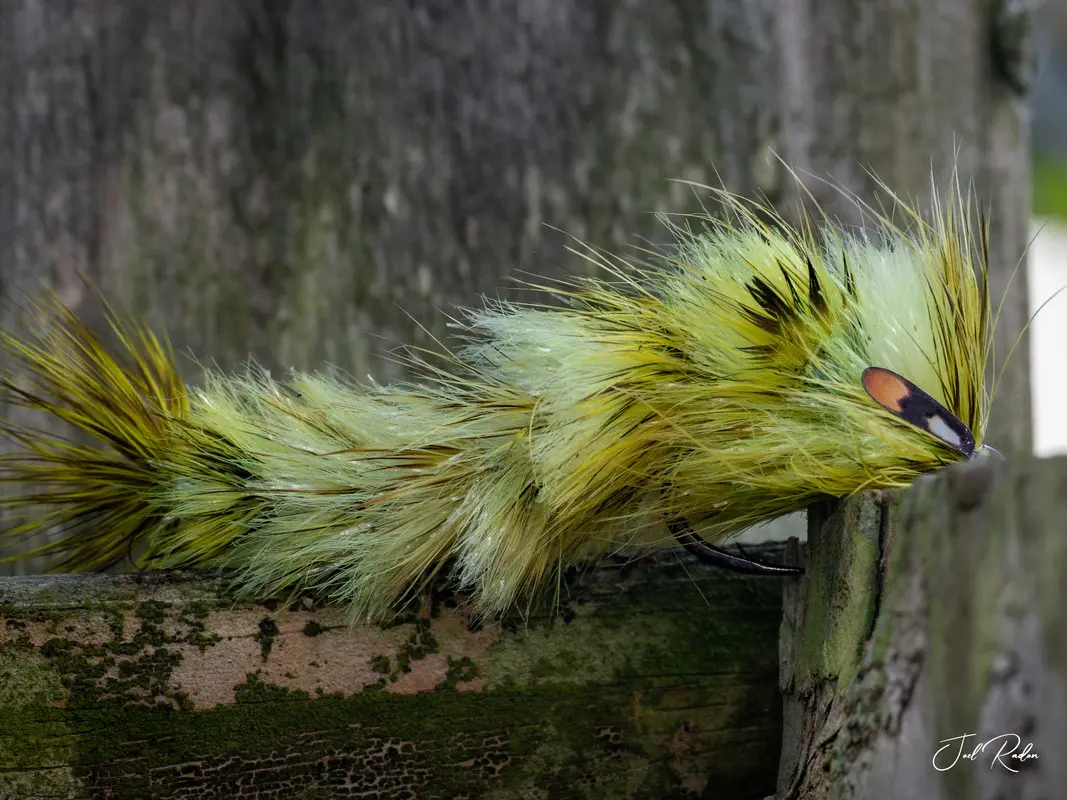Tackle: Fly - Streamers (Color Selection)

Choosing the Right Color for Streamer Fishing
When it comes to streamer fishing, color selection can be just as important as fly pattern or retrieve technique. Fish rely heavily on visual cues to locate prey, and the color of your streamer can greatly influence how visible or enticing it appears in different conditions. Understanding how color interacts with light, water clarity, and fish behavior can help you make more informed choices and improve your chances of success.
🎯 Why Color Matters
Color plays a vital role in streamer fishing because it affects how easily your fly is seen—and how convincingly it mimics natural prey. Depending on the conditions, certain colors will stand out more, trigger instinctive strikes, or blend in to look more realistic. The key is knowing when to match the environment and when to stand out.
🎨 Common Color Strategies
1. Natural Colors
Browns, greens, whites, and olives are designed to closely imitate local baitfish and other aquatic life. These colors are especially effective in clear water where fish have more time to inspect their target.
- When to use:
- Clear water conditions
- Bright daylight
- Pressured fisheries
- Why it works: Natural colors reduce suspicion and help your streamer blend in as a believable meal.
2. Bright Colors
Chartreuse, pink, orange, and fluorescent tones are highly visible, making them ideal for stained or murky water. These colors can grab a fish’s attention quickly, especially in low-light conditions like dawn, dusk, or overcast days.
- When to use:
- Murky or stained water
- Overcast skies or low light
- Fast-moving water
- Why it works: Bright streamers create visual contrast and visibility when natural colors might go unnoticed.
3. Contrasting Colors
Streamers with high-contrast patterns—such as black and white, red and yellow, or purple and pink—stand out by breaking up their outline. These bold combinations can trigger reaction strikes from territorial or aggressive fish.
- When to use:
- Aggressive, reaction-strike scenarios
- Dirty water or limited visibility
- When nothing else is working
- Why it works: Contrast creates a disruptive visual that draws attention and provokes instinctive aggression.
🧠 Pro Tips for Color Selection
- Start subtle, then get bold: Begin with natural colors and escalate to bright or contrasting options if fish aren’t responding.
- Match the hatch… or break the rules: Use local baitfish color schemes as a guide, but don’t be afraid to throw something flashy.
- Switch it up: Fish can become conditioned to certain looks. If you’re getting follows but no strikes, change color before changing the pattern.
🎣 Final Thoughts
Color isn't just an aesthetic choice—it's a key part of your streamer’s performance. By choosing the right hues for the conditions, you can dramatically increase your odds of hooking fish. Whether you prefer blending in or standing out, keeping a range of colors in your streamer box ensures you're ready for whatever the water throws at you.
The World's Most Complete Fishing Resource
We're building the ultimate fishing encyclopedia—created by anglers, for anglers. Our articles are created by real experienced fishermen, sometimes using AI-powered research. This helps us try to cover every species, technique, and fishing spot imaginable. While we strive for accuracy, fishing conditions and regulations can change, and some details may become outdated or contain unintentional inaccuracies. AI can sometimes make mistakes with specific details like local access points, parking areas, species distributions, or record sizes.
Spot something off? Whether it's an incorrect boat ramp location, wrong species information, outdated regulations, or any other error, please use the "Help Us Improve This Page" section below. Your local knowledge makes this resource better for every angler.
Explore Related Topics
Discover more articles to deepen your knowledge
Curating articles for you...
Create your own Research Page using AI
Try our AI assistant for free—sign up to access this powerful feature